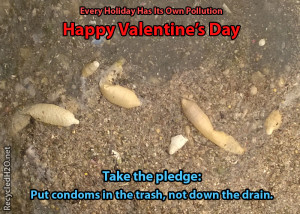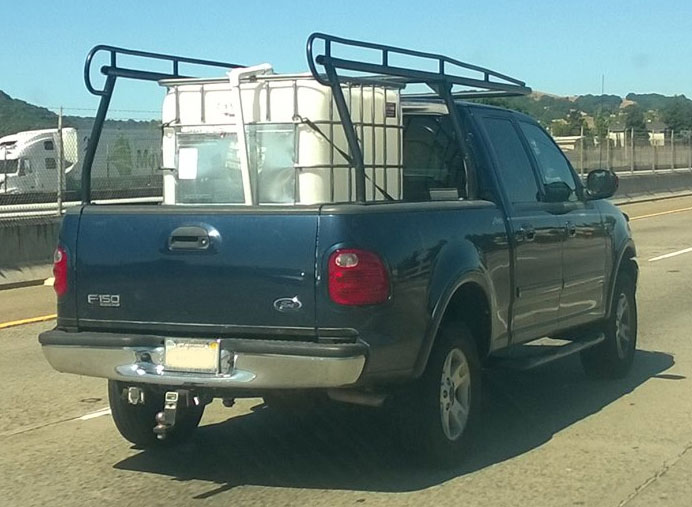Nobody wants to talk about condoms, but everyone wants to talk about sex.
After the long winter holiday we find ourselves celebrating the Hallmark of holidays… Valentine’s Day. If you had my eyes, you would know that Hallmark isn’t the only one making a profit on this day of love. Trojan, Durex and Lifestyles are where the real money is made and pollution occurs.
Warning!
If pictures of wastewater is disturbing to you, then look no further.
Just remember – used condoms go in the trash, not down the drain.
Whether you’re having safe sex with your high school sweetheart, taking part in promiscuous sex with someone you took home from a bar or playing it safe from unintentional offspring with your partner, using a condom on Valentine’s Day is a must.
But with that, comes the responsibility to putting the used “rubber” in the trash and not flushing the “jimmy hat” down the drain. It’s because that “$0.75 insurance policy” may end up at a wastewater treatment plant, and honestly that “love glove” is not pretty when it gets there. (Picture below taken about a week ago.)
Every February 14th and the few days that follow, a sea of various sized white, red, yellow, black and “ribbed for her pleasure” condoms appear in floating in the sewage at a wastewater treatment plant. Sometimes they have been tied like balloons while others are grouped together like a swimming school of fish.
But it’s all the same. Trash such as condoms should never be flushed, instead put it in the garbage.
Sewage treatment plants are not designed to handle trash, only the three P’s: “Pee, Poo and (toilet) Paper”!
If you lived on a septic system, you may already know that a condom doesn’t break down in a septic tank, the same is true at a wastewater treatment plant. Condoms don’t break down and unless some sort of mechanical process removes them, they could travel right through.
Why does it matter? Lets take the Milwaukee Metropolitan Sewerage District for instance which paid a laborer “$52.15 an hour to manually skim condoms off final wastewater treatment tanks.” Besides the physical labor costs, condoms could make it entirely through the treatment process and end up in a river or ocean. Eventually – being consumed by fish or seagulls that think it is edible.
So please do your part, man up and put your used condoms in the trash!




0 Comments
4 Pingbacks